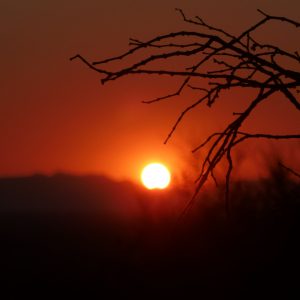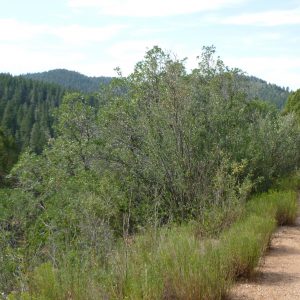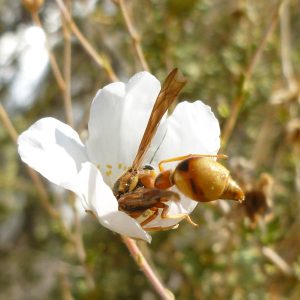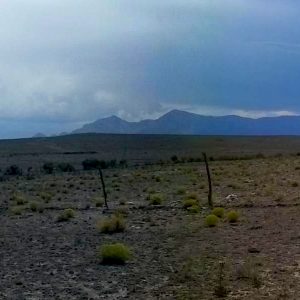Since I last posted, we have gotten to do some FUN things. It has been an exciting past month or two, and I’m pumped to share.
Cave Swallow Mist-netting & banding in C-bad
-The other CBG Intern and I had the opportunity to meet up with the folks at the Carlsbad, NM BLM office for their weekly tradition at Carlsbad Caverns National Park. Every week, for the past 30 or so years, scientists and eager interns participate in the mist netting surveys of the cave wwallows. This study was started awhile back in attempts to figure out where these birds nest in the winter. Since then, there has been a vast amount of data collected on the birds and each week more data is added to it. Basically, at the mouth of main entrance of the cave, we set up a large net and waited until we caught about 10 or so birds. It was easy to tell if the birds were older and had been caught a couple times, versus the baby ones, because the little ones squawked and freaked until they tired themselves out! Upon getting about 10 birds, we would take the net down, and carefully try to untangle them from the net. This proved to be quite the challenge sometimes. The older birds would usually just hang there and take it, but the young ones would get nervous and make it worse! Once they were finally untangled, either their existing band information was noted, or they got a new band, and simply released back into the cave. This went on for a few hours until the grand finale – the bat flight. Everyday, hundreds of people come to the Caverns to experience the bat flight. There is even and auditorium style set up at the mouth of the cave for easier viewing. Once it got dark enough, we quickly packed up our belongings and posted up on the sides of the cave. And only a few minutes later, you could hear a very low hum – that grew louder, and louder – until … BATS! And literally millions of them came spewing out of the cave. It was quite the experience, I highly recommend it!
How many interns does it take to catch a lizard?
-Normally, we work with the range department in the office and slowly check our way through a long list of sites-to-be-monitored. Same goes for the wildlife crew. So we decided to mix it up on two separate days, the wildlife crew came out with the range, and then on another day we went out in the field with them. In our field office, there are two different endangered/threatened animals – the Lesser Prairie Chicken and the Sand Dune Lizard. On the day we went to see what it’s like to be a wildlife intern, they were going to check some traps previously set out for the Sand Dune Lizard. All was going well until one of the wildlife interns caught site of a lizard. For the next 10-15 minutes, all ten of us were crawling, jumping, diving in the sand, and occasionally waiting very still for this little lizard to come back out. And finally, it was captured! We were all very excited and us range interns carefully watched as the proper documentation was taken for this endangered species. After we gently put it away, the pictures were reviewed by the wildlife biologist, only to our dismay, it was NOT a Sand Dune Lizard! So sad, but it was fun in the mean time.
Exploring the Recreation Areas
-Yet another fun thing we did a few weeks ago was a caving trip! A group interns went out with the cave specialists and the recreation planner to inspect the caves. It wasn’t my first time caving, but it was my first time caving in the southwest, and it was hot! The cave was in the desert, and even though we were underground, it didn’t get much cooler inside. But it was still lots of fun and I’m happy we got to do it. We saw a few cool things, such as a dead porcupine, and one of the other interns had a very close encounter with a very large rattlesnake. I felt very fortunate to be able to explore the cave at all, because due to white nose syndrome, all of the caves in the Roswell Field Office are closed. However, the cave specialists introduced us to the proper decontamination methods in order to keep the cave in pristine condition.
New Mexico Native Plant Society Annual Conference in Alamogordo, NM
-Thanks to the Farmington CBG Interns (Shout out to Diedre and Henry!) we found out about the Native Plant Conference that was August 9-12. The Native Plant Society is an organization that not only promotes the use of native plants but also gives a lot of support to students in New Mexico pursuing plant research. Myself and the other interns here headed over and decided to camp out at a state park near by, and commuted to and from the conference, which was at the local branch of New Mexico State University. There were a variety of lectures, seminars, and hikes. We also viewed a documentary about Aldo Leopold called Green Fire. Overall the whole conference was a great experience. We chatted with many people who have been in the “business” (or some sort of dealing with plants) for their entire lives. It was an eye-opener for potential career paths and networking possibilities. And, on top of all that, we went to White Sands National Monument Saturday night, just in time to view a meteor shower. 🙂
Besides all the extracurricular activities we’ve gotten to participate in, we have also been doing different types of monitoring studies. I definitely enjoy these because it only broadens my scientific horizon. I am also starting a side project here with the Recreation Planner and also the Oil & Gas Environmental Consultant. Together, we are creating a wildflower brochure for at least two of the recreation areas in the Field Office. I am extremely excited and proud of this project, even though it is still in its’ beginning phases. Hopefully the next time I post I will have many more details about the project.
Hilarious 90’s Style BLM Rap Video… a MUST see.



























